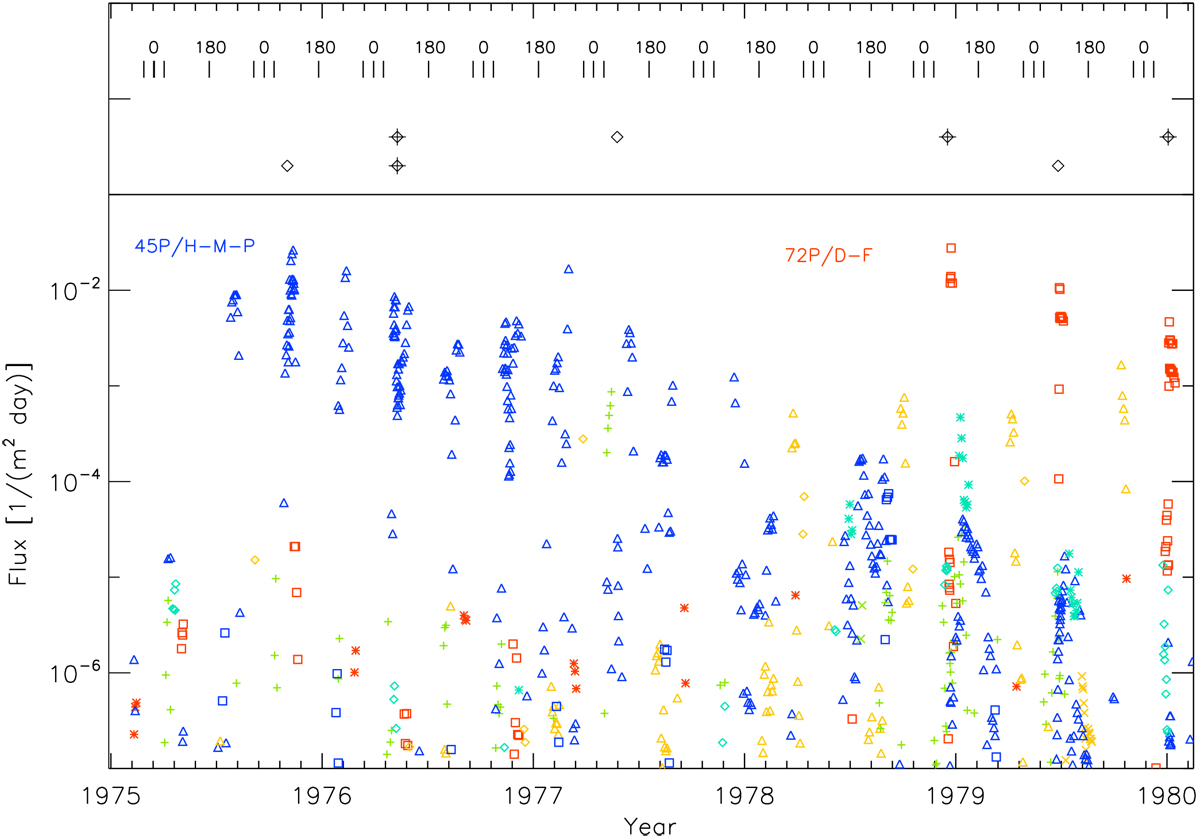Fig. 4

Simulated dust fluxes for cometary meteoroid trails intercepted by the Helios spacecraft (cf. Fig. 6). Symbols and colours distinguish individual comets. Helios’ true anomaly angle is indicated at the top. Black diamonds show the detection times of seven particles at a true anomaly angle of η = 135 ± 1°. Four particles identified in this work as potential cometary trail particles are additionally marked with crosses (top row: detections with the ecliptic sensor. Bottom row: detections with the south sensor). The coloured symbols refer to the following comets: red squares: 72P/D-F; blue triangles: 45P/H-M-P; green crosses: 15P/Finlay; light blue asterisks: 141P/Machholz 2-A; yellow triangles: 210P/Christensen. The remaining symbols refer to other comets forming a very low background flux. The simulationswere performed with a two-day time-step, and the simulated particles are in the mass range 10−8 kg ≤ m ≤10−2 kg.
Current usage metrics show cumulative count of Article Views (full-text article views including HTML views, PDF and ePub downloads, according to the available data) and Abstracts Views on Vision4Press platform.
Data correspond to usage on the plateform after 2015. The current usage metrics is available 48-96 hours after online publication and is updated daily on week days.
Initial download of the metrics may take a while.


